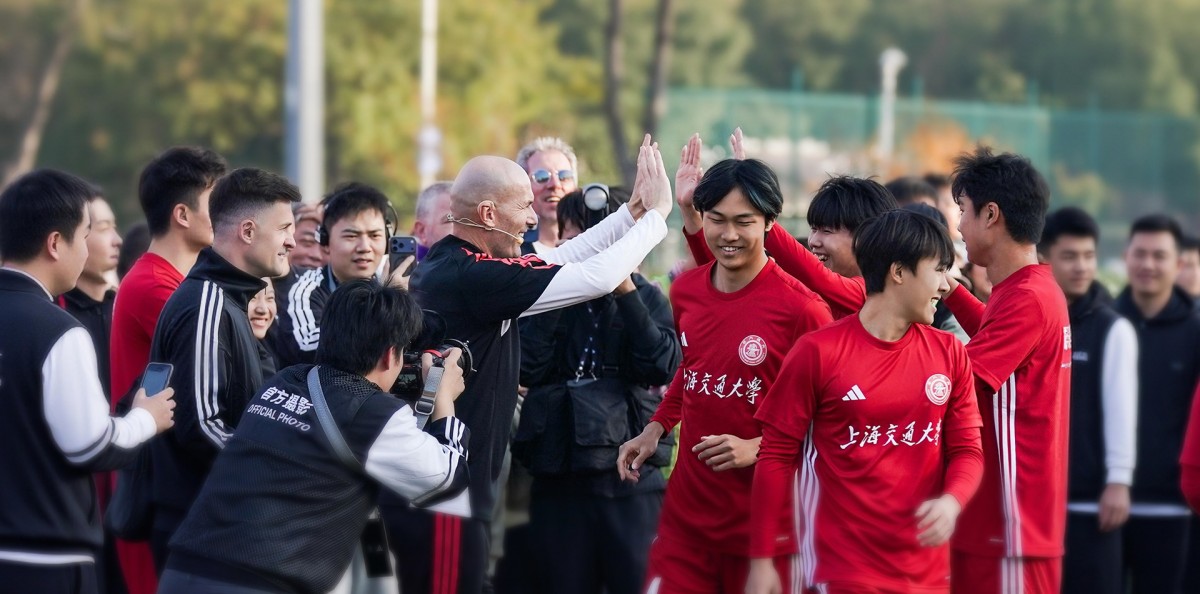The 12th SJTU-KAIST-UTokyo Joint Academic Symposium was successfully held on September 29, 2025, at the Komaba Research Campus of the University of Tokyo. Jointly organized by Shanghai Jiao Tong University (SJTU), Korea Advanced Institute of Science and Technology (KAIST), and The University of Tokyo (UTokyo), the symposium was hosted by UTokyo’s Institute of Industrial Science (IIS). Faculty and students from the three universities focused on cutting-edge issues and innovative technologies in the field of ocean engineering, engaging in in-depth discussions on research outcomes and directions for future collaboration.

The opening session was chaired by Prof. Katsuyuki Suzuki from UTokyo, who also presented the university’s annual research report. Prof. Zhen Gao, Vice Dean of SJTU’s School of Ocean and Civil Engineering, and Prof. Daejun Chang from KAIST delivered welcome remarks on behalf of their institutions. Prof. Zhen Gao delivered the opening lecture titled “An Introduction to the Recent Research Activities on Marine Technology at the School of Ocean and Civil Engineering, Shanghai Jiao Tong University.” In his presentation, he provided a comprehensive overview of the school’s latest research progress in areas such as smart ships, low-carbon fuels, and marine renewable energy.

In this year's symposium, twelve invited lectures and more than twenty poster presentations covered a wide range of topics including intelligent ships, deep-sea exploration, ocean renewable energy, green propulsion, and structural dynamics. Prof. Xinliang Tian delivered a keynote speech titled “Progress of Model Testing Technology for Floating Wind Turbines in SJTU,” presenting the latest developments in floating wind turbine model testing, including hybrid testing methods, wave-wind coupling simulations, and dynamic response characterization. Following that, Senior Engineer Yufeng Kou gave a report entitled “Experimental Research on the Effect of Gas Void Fraction on the Slamming Pressure in Wedge Water Entry Problem,” which experimentally examined the influence of gas content on slamming loads during wedge water entry. The findings provided valuable insights into hydrodynamic impact prediction and design optimization for marine structures.Dr. Peng Wang, Assistant Researcher, delivered a presentation titled “Study of High-Efficiency Propulsion Methods for Wave Gliders Driven by Ocean Energy.” He introduced the development and offshore applications of self-developed series of wave gliders.In the poster session, Prof. Xin Li presented the poster titled“Development and application of field monitoring system for floatover operations,” which introduced the application of a field monitoring system in floatover installation operations. Prof. Xinliang Tian showcased the poster“From Strings to Webs: A New Construction Method for Deep-Sea Neutrino Telescopes,”proposing a novel 3D web-like construction method to address the challenges of long deployment times and high costs associated with the deployment of deep-sea neutrino telescope detection structures. Assoc. Prof. Aichun Feng presented the poster“Vibration stability of lifting pipe transporting harmonically perturbed flow,”studying the vibration stability of lifting pipes used in deep-sea mining operations.Assoc. Prof. Yuchao Yuan displayed the poster“Global-local stress coupling reconstruction method of ship hull for an ore carrier based on multiple structural mechanical superposition theory,” introducing a new stress reconstruction method that provides an accurate analysis of the hull structure of ore carriers.During the symposium, young scholars and graduate students from the three universities presented a variety of innovative studies covering topics such as hydrogen energy transportation, intelligent control of marine equipment, and design of deep-sea observation systems. In the poster session, participants engaged in lively discussions on research methodologies, experimental techniques, and potential avenues for future collaboration, creating a vibrant and stimulating academic atmosphere.




On the following morning, September 30, Prof. Zhen Gao, Vice Dean of SJTU's School of Ocean and Civil Engineering, and his delegation met with Prof. Katsuyuki Suzuki and his research team from the University of Tokyo for a bilateral meeting and exchange.Both sides conducted in-depth discussions on the disciplinary development, research priorities, and long-term cooperation mechanisms between the two institutions. They explored future collaborations in areas such as joint research projects, graduate co-supervision, faculty exchanges, and academic partnership development, reaching a preliminary consensus on strengthening future cooperation. The meeting marked an important step toward establishing a sustainable and strategic collaboration framework between SJTU and UTokyo in the field of ocean engineering.



Since its inception at SJTU in 2014, the SJTU-KAIST-UTokyo Joint Symposium has become an important international platform for academic exchange in naval architecture and ocean engineering. The annual event rotates among the three universities and continues to foster research collaboration, innovation, and talent cultivation.The representatives agreed that the symposium would serve as new momentum for deeper cooperation in smart ships, marine renewable energy, deep-sea exploration, and green shipping, jointly advancing marine science and technology for a sustainable ocean future.



